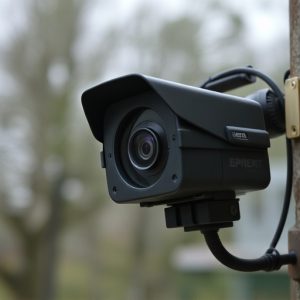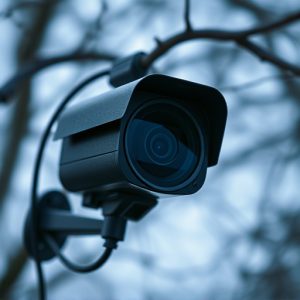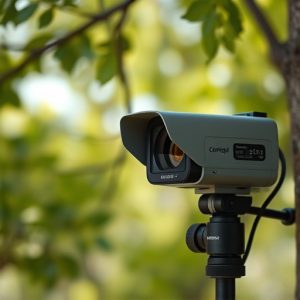Uncover Hidden Cameras: RF Sweep Tutorial for Indoor Security
Wireless Night Vision Security Cameras Indoors offer remote, real-time surveillance through 2.4 GHz/…….
Wireless Night Vision Security Cameras Indoors offer remote, real-time surveillance through 2.4 GHz/5 GHz bands, enhancing security with IR LEDs for low-light visibility. RF (Radio Frequency) detector sweeps are crucial for uncovering hidden cameras, as these devices transmit signals on specific frequencies. Using specialized equipment like detectors, antennas, and signal boosters, along with direction-finding techniques and software analysis, allows for accurate detection of covert cameras. Regular calibration, testing, and database updates ensure optimal performance in navigating the complex indoor security landscape.
Uncover hidden surveillance with our comprehensive guide to RF detector sweeps. Wireless Night Vision Security Cameras Indoors offer seemingly invisible threats, but don’t worry—we’ll walk you through the process of detecting them. Learn why RF sweep is a powerful tool, discover essential tools needed for successful detection, and master step-by-step techniques. From basic methods to advanced precautions, this tutorial equips you to navigate the intricate world of indoor camera detection.
- Understanding Wireless Night Vision Security Cameras Indoors
- Why Detect Hidden Cameras Using RF Sweep?
- Essential Tools for RF Detector Sweep
- Step-by-Step Guide to RF Detector Sweep for Hidden Cameras
- Advanced Techniques and Precautions for Indoor Camera Detection
Understanding Wireless Night Vision Security Cameras Indoors
Wireless Night Vision Security Cameras Indoors have become increasingly popular for home and business security due to their advanced technology and ease of use. These cameras leverage wireless connectivity, often utilizing 2.4 GHz or 5 GHz bands, to transmit video data to a central monitoring system or smartphone app. This allows for remote access and real-time surveillance from anywhere with an internet connection.
Unlike traditional wired cameras, the lack of physical cables makes installation more flexible, suitable for both interior and exterior spaces. Indoor wireless night vision cameras are equipped with IR LEDs that illuminate the area in low light conditions, enhancing visibility up to 100 feet (30 meters). This feature ensures round-the-clock monitoring, making them ideal for securing entryways, hallways, and other high-risk areas within a building.
Why Detect Hidden Cameras Using RF Sweep?
Using an RF (Radio Frequency) detector sweep is a highly effective method for identifying hidden cameras, particularly in indoor wireless night vision security camera setups. These devices operate on specific radio frequencies to transmit video and audio data, making them detectable by specialized equipment. An RF sweep allows users to uncover these subtle signals, revealing the presence of covert surveillance devices that may be capturing intimate moments without consent.
By employing this technique, individuals can ensure their privacy and security in enclosed spaces. It’s especially valuable for those concerned about wireless night vision cameras installed secretly for malicious purposes or without their knowledge. This proactive approach to detection empowers users to take control of their personal and domestic environments, fostering a sense of safety and peace of mind.
Essential Tools for RF Detector Sweep
When it comes to detecting hidden cameras, particularly wireless night vision security cameras indoors, a RF (Radio Frequency) detector sweep is an invaluable tool. To ensure effective and efficient detection, several essential tools are required. These include a high-quality RF detector designed specifically for identifying wireless camera signals, as well as a range of accessories like antennas and signal boosters. The RF detector should be capable of picking up signals across various frequencies commonly used by indoor security cameras, from 2.4 GHz to 5 GHz.
Additional essential tools include a comprehensive set of test signals or known emissions that can help validate the detector’s readings. A well-lit testing environment is also crucial to minimize interference from other electronic devices. For optimal results, professionals recommend regular calibration and maintenance of the RF detector to ensure its accuracy. With these tools at hand, you’ll be well-equipped to navigate the intricate landscape of wireless night vision security cameras indoors, ensuring privacy and security in any setting.
Step-by-Step Guide to RF Detector Sweep for Hidden Cameras
Using an RF (Radio Frequency) detector sweep is a powerful method to uncover hidden cameras, especially those designed for wireless night vision security cameras indoors. Here’s a step-by-step guide to help you navigate this process effectively:
1. Prepare Your Equipment: Before beginning, ensure you have the necessary tools: an RF detector, batteries (if required), and protective gear like gloves. Choose a device with adjustable sensitivity settings suitable for indoor environments.
2. Calibrate and Test: Start by calibrating your RF detector according to the manufacturer’s instructions. Next, test it in areas without hidden cameras to establish a baseline reading. This step is crucial to ensuring accurate results during the sweep.
3. Scan the Area: Move methodically across the room or area you suspect might contain a hidden camera. Hold the RF detector close to walls, ceilings, and any surfaces where cameras are more likely to be concealed. The device will emit signals indicating the presence of radio frequency emissions, which many modern wireless security cameras emit.
4. Identify Peak Readings: Pay attention to areas where the detector’s signal strength peaks unexpectedly. These could be spots with hidden camera modules transmitting data wirelessly. Take note of these locations for further investigation.
5. Investigate Peaks: Once you’ve identified potential hot zones, carefully inspect those areas. Look for any devices that might be attached or embedded in the walls or ceilings. If found, check if they match known wireless security camera models.
6. Adjust Sensitivity (if needed): If signals are weak but you suspect a camera is present, adjust the detector’s sensitivity settings to increase detection range and accuracy.
Advanced Techniques and Precautions for Indoor Camera Detection
When dealing with indoor hidden camera detection using an RF detector, it’s crucial to employ advanced techniques tailored for this specific environment. Wireless night vision security cameras indoors present unique challenges due to signal interference from other electronic devices and the need to respect privacy while searching. One effective method is to use direction-finding antennas that can pinpoint the source of wireless signals with precision. By sweeping the antenna across the area, you can visually confirm signal strengths and identify anomalies, potentially revealing hidden cameras.
Another crucial precaution is to ground yourself and any equipment to minimize electromagnetic interference (EMI). This simple step can significantly reduce false positives caused by external signals. Additionally, utilizing specialized software that filters and analyzes RF data in real-time can enhance detection accuracy. Regular updates of the software’s database with known camera frequencies and protocols are essential for effective indoor camera detection using RF technology, ensuring you stay ahead of potential threats from wireless night vision security cameras.
Wireless Night Vision Security Cameras Indoors have become a popular choice for home and business security, but their hidden presence can be a concern. Using an RF (Radio Frequency) detector sweep offers a powerful solution to identify these covert cameras, ensuring peace of mind in any environment. By following the step-by-step guide and advanced techniques outlined in this tutorial, you’ll be equipped to detect hidden RF-enabled cameras effectively, fortifying your security measures against potential surveillance threats.


